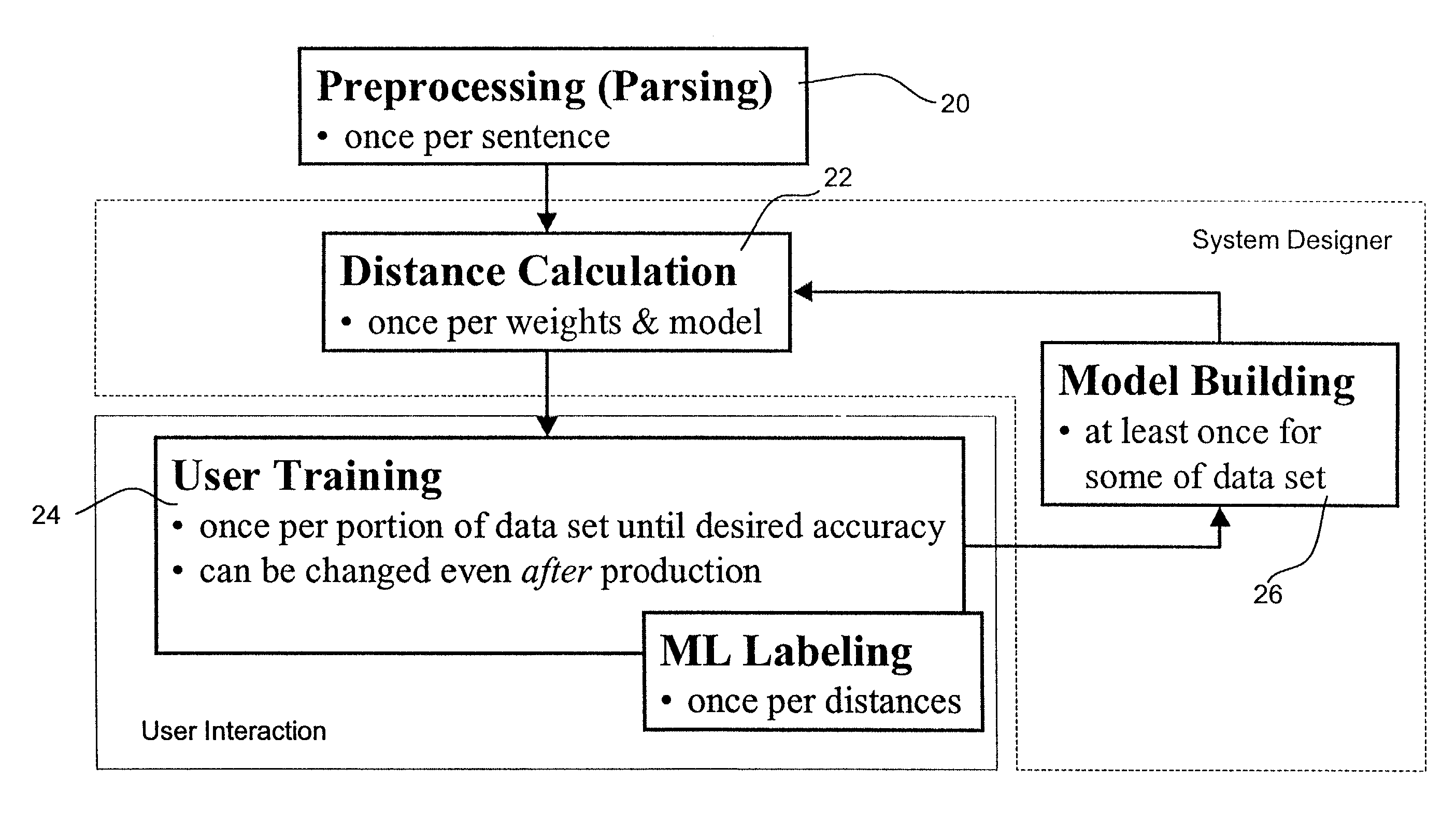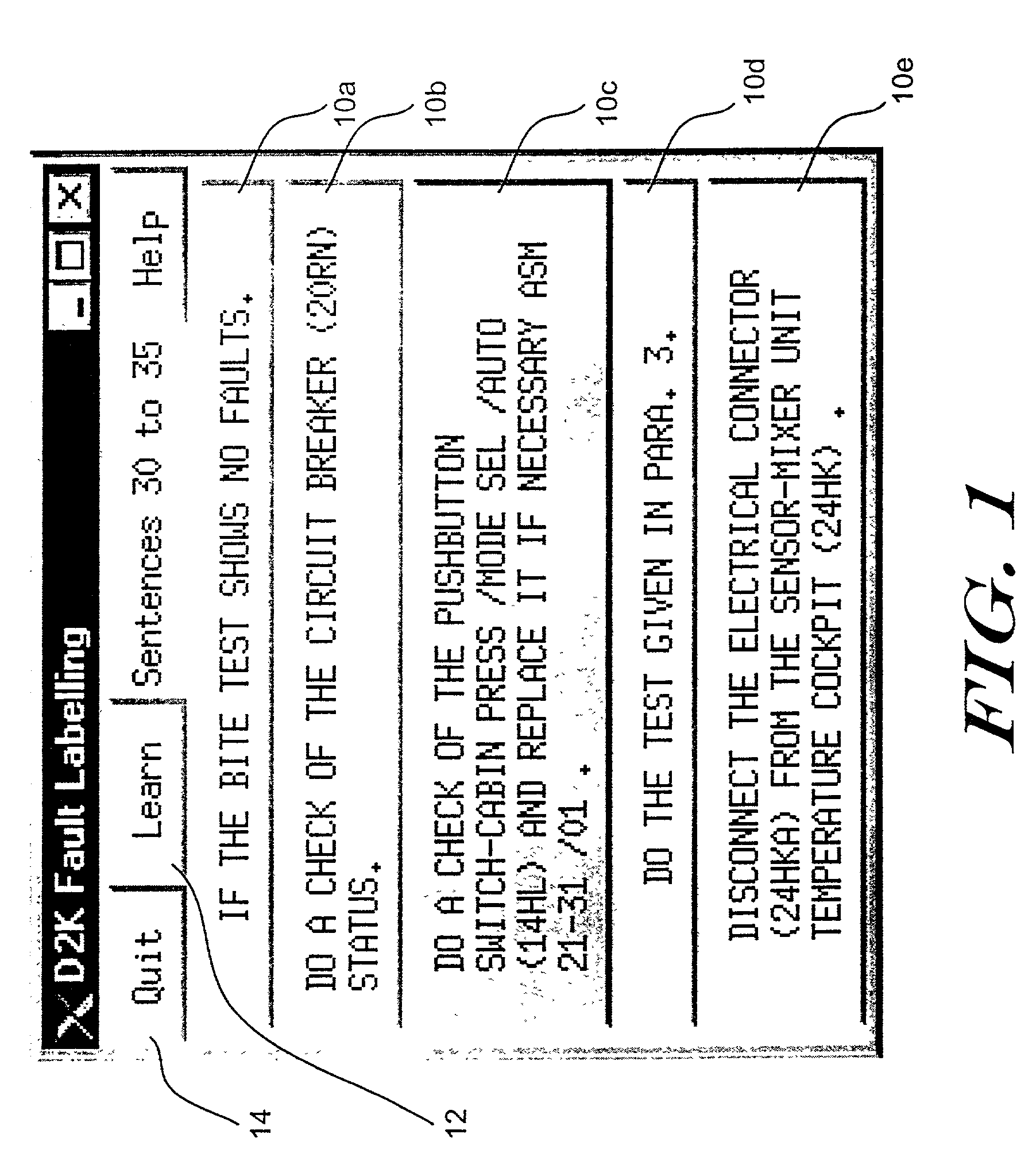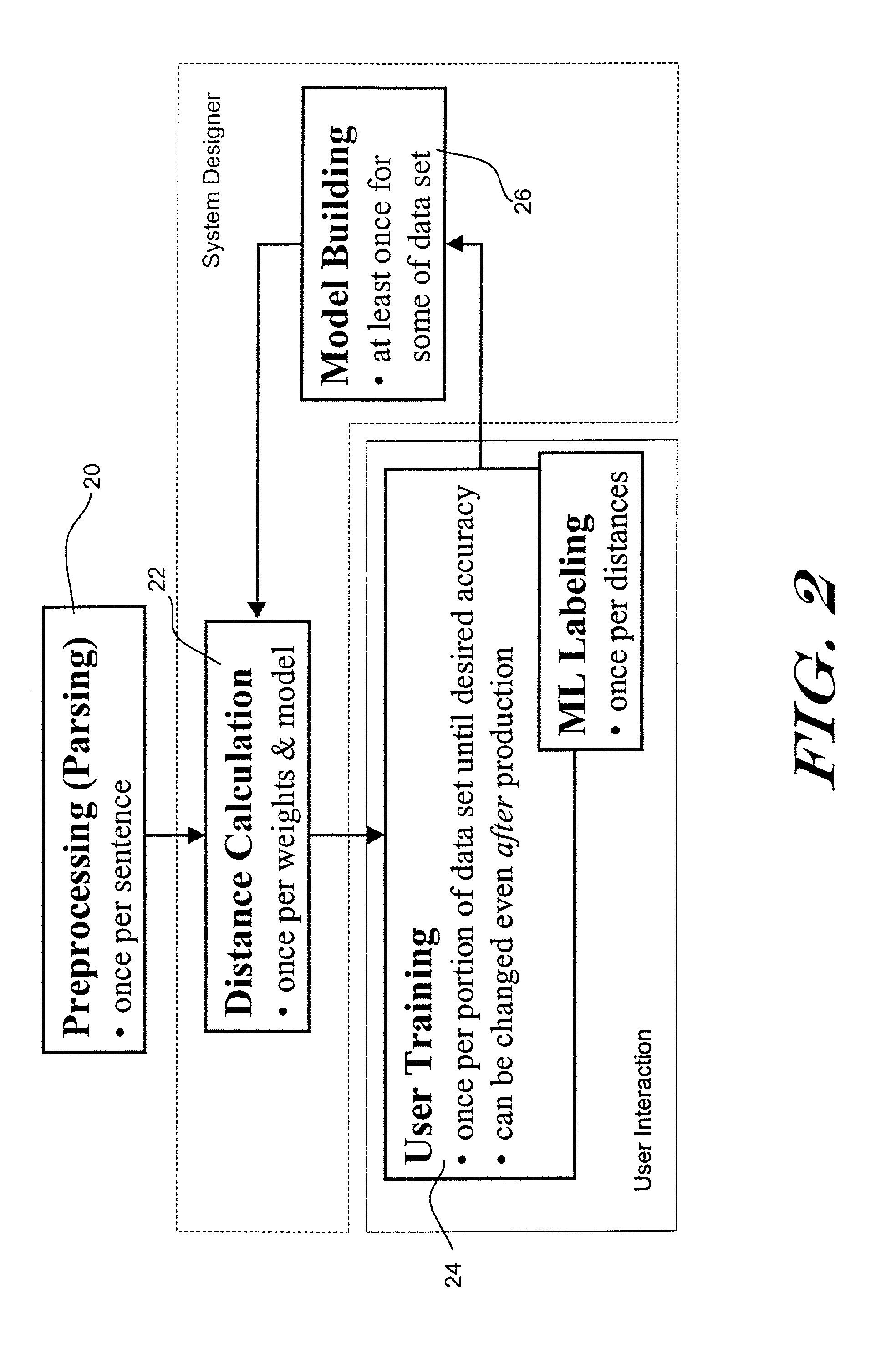Method and apparatus for determining a measure of similarity between natural language sentences
a natural language and similarity technology, applied in the field of natural language text or sentence classification methods and systems, can solve the problems of increasing the difficulty of developing increasing the difficulty of implementing computer systems that can perform tasks, and increasing the difficulty of implementing sequential systems that work with large numbers of data elements, so as to achieve easy customization and increase the accuracy of the system
- Summary
- Abstract
- Description
- Claims
- Application Information
AI Technical Summary
Benefits of technology
Problems solved by technology
Method used
Image
Examples
Embodiment Construction
[0040]FIG. 1 is a screen shot of an illustrative graphical user interface in accordance with the present invention. The illustrative graphical user interface provides an interactive and iterative environment for machine learning in the context of placing sentences into desired categories. At each iteration of the learning process, the user is presented with a set of sentences, which are highlighted with best guesses for sentence classification. In FIG. 1, a number of training sentences are displayed at 10a–10e, with the “fault” type sentences, such as sentence 10c, highlighted as shown. The user may then make any necessary corrections, preferably by clicking on the appropriate sentences to toggle the highlights. Control is then returned to the ML learner by depressing the learn button 12. The ML learner then tunes one or more weights and / or other operating parameters to the new correlation data. The algorithm then uses all previously labeled sentences including those just categorize...
PUM
 Login to View More
Login to View More Abstract
Description
Claims
Application Information
 Login to View More
Login to View More - R&D
- Intellectual Property
- Life Sciences
- Materials
- Tech Scout
- Unparalleled Data Quality
- Higher Quality Content
- 60% Fewer Hallucinations
Browse by: Latest US Patents, China's latest patents, Technical Efficacy Thesaurus, Application Domain, Technology Topic, Popular Technical Reports.
© 2025 PatSnap. All rights reserved.Legal|Privacy policy|Modern Slavery Act Transparency Statement|Sitemap|About US| Contact US: help@patsnap.com



